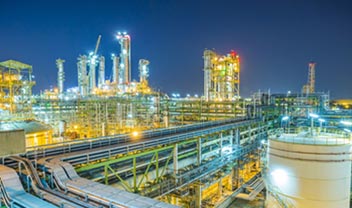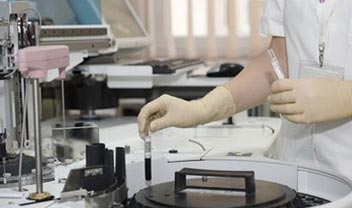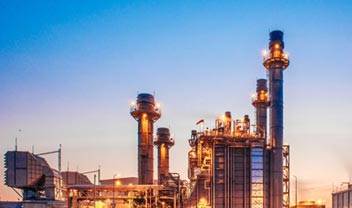- January 22, 2024
Panchali Roychoudhury
Introduction
In a fast-paced world of research, laboratories face increasing pressure to innovate rapidly. Amidst this, data emerges as the ultimate tool, with big pharma companies leading the charge in utilizing AI-driven analytics for lab efficiency improvement.
Some of the challenges faced in ensuring optimal laboratory performance today include:
Some of the challenges faced in ensuring optimal laboratory performance today include:
- A myriad of data silos resulting in myopic decision making
- Manual reporting processes that cause unnecessary overhead
- Delayed reporting, which leads to missed opportunities
Performance analytics labs: A centralized data-driven approach
Laboratories are realizing the significance of centralized data management with data lakes and warehouses as they help consolidate data acquired from lab software and instruments. A centralized, data-driven performance analytics approach leads to enhanced productivity, efficiency, and utilization, with a focus on reducing operational costs and procedural errors. Key Performance Indicators such as turn-around time, asset utilization, equipment downtime, consumable usage, and overall equipment effectiveness play a pivotal role in measuring lab performance.
As the number and complexity of KPIs grow, manually optimizing them and maximizing operational performance becomes challenging. AI-enabled analysis techniques are now being adopted to mitigate this challenge and ensure continuous improvement in lab KPIs, moving towards optimized lab performance.
As the number and complexity of KPIs grow, manually optimizing them and maximizing operational performance becomes challenging. AI-enabled analysis techniques are now being adopted to mitigate this challenge and ensure continuous improvement in lab KPIs, moving towards optimized lab performance.
The role of AI-enabled optimization techniques and ML in laboratories
Some areas where the implementation of AI-driven analysis techniques is already causing disruptions:
- Demand forecasting – Predictive analysis of historical data helps estimate and predict the demand for raw materials and consumables required in the lab, reducing procurement cycles and associated costs.
- Inventory management and optimization – Efficient demand forecasting results in efficient inventory management. Leveraging ML algorithms helps track consumable wastage and accurately identifies the factors causing it. This allows labs to take corrective actions, reduce inventory management costs, and ensure lab inventory optimization.
- Predictive maintenance for labs – AI can help identify anomalies in the expected performance and the potential downtime or chances of failure for lab instruments. This allows labs to plan for pre-emptive instrument maintenance and avoid operational outages caused by unplanned instrument downtime.
TCG Digital’s lab performance monitoring solution: Enhancing operational efficiency
TCG Digital’s laboratory performance monitoring solution provides a consolidated view of interconnected lab data by merging LIMS data with other sources like scientific data management systems (SDMS) or electronic lab notebooks (ELN). The performance dashboards provide insights into critical sample metrics like cost assessment, TAT, and on-time completion, enabling data-driven decision-making.
An assortment of solutions for lab analytics include:
An assortment of solutions for lab analytics include:
| Improved quality management |
|
| TAT Analysis |
|
| Operational cost reduction at labs |
|
| Improved resource planning and scheduling |
|
| Improved material management |
|
| Improved instrument management |
|
The solution comprises of a rich library of laboratory KPIs that facilitate the following:
- Analysis of on-time completion and turnaround time for all requests
- Analysis of pending requests overdue and average delay statistics
- Analysis of completed tests to track on-time deliveries by client/sample or other dimensions
- Analysis of pending tests overdue and average delay statistics and trends
- Analysis of billed/un-billed turnover costs – trends, distribution and drill-down
- Cost analysis over invoicing item parameters – trends and drill-down
- Analysis of timesheet data, time tracking, and charge-outs by employees
- On-off specification count analysis
- Defect analysis with root cause analysis
Reimagine your lab’s performance monitoring: Improve KPIs, and optimize performance
Performance optimization in research labs is crucial for optimal resource utilization, and cost reduction.
TCG Digital’s innovative solutions are empowering laboratories to navigate the complexities of modern research seamlessly, providing better insights into process performance and facilitating performance optimization. Embrace the future of lab excellence with TCG Digital’s AI-powered lab performance-analytics solutions that not only offer a 360-degree view of lab operations but also provide transparency and better decision-making capabilities.
Want to know more about how to step up your lab performance? Write to us at contact@tcgdigital.com
TCG Digital’s innovative solutions are empowering laboratories to navigate the complexities of modern research seamlessly, providing better insights into process performance and facilitating performance optimization. Embrace the future of lab excellence with TCG Digital’s AI-powered lab performance-analytics solutions that not only offer a 360-degree view of lab operations but also provide transparency and better decision-making capabilities.
Want to know more about how to step up your lab performance? Write to us at contact@tcgdigital.com












